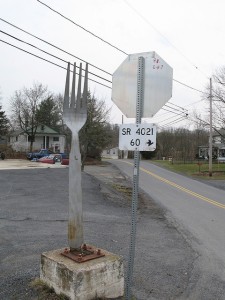So why am I writing a piece about dialog? There are two main reasons. First, I’ve noticed that even some of the best writers, i.e, those who can craft a great plot, create great characters, and write beautiful exposition, can write wooden dialog. Sometimes the dialog doesn’t sound like the character, but rather like the author holding up cue cards.
Second, I’m a far cry from Shakespeare, but I almost always receive compliments on my #dialog from critique groups and beta readers. In college, my creative writing credits were in screenplay #writing, and I think that’s where I developed good dialog skills.
So here are #writingtips to help you out, if you find yourself struggling. Please pardon my occasional extreme examples, I just can’t help it.

Original Photo – Statues by Tim Evanson used under CC License – Chat Bubble Modifications by E. San Giacomo
1. Forget yourself and let the character do the talking
Remember, the reader will continue to read because the character is interesting. Therefore, bury your own ego and let the character say the things they would say under the circumstances. Of course you have to factor in the aspects of the character, like their age, gender, and education.
And the Lord ascended the mount, and upon seeing the gathering crowd, he turned to his disciples and said,”Yo Pete, got enough grub for all these folks to chow down?”
2. Forget the long speeches
Even if your character is giving a speech, remember to break it up with beats, like adjusting their posture, dramatically pausing, or taking notice of the crowd’s reaction. Dialog really needs to be short and snappy and complemented with actions.
Here’s a sample of a character giving a speech from my yet unpublished #ShortStory Little Red Revolution. Notice how I break up the speech.
John stood tall at the podium. “So the company has the nerve to call the latest contract an offer.” He shook his head. “Well, where I come from it’s called an insult!”
The crowd applauded and cheered.
“No more zeroes for our mining heroes!”
While John stirred hearts and minds, he saw a pasty-gray looking man skulk over to a dark shadow cast by a staircase along the back wall. With everyone’s attention fixed on the podium, John knew that he was the only one who took notice of the strange man.
This is quite different from the John Galt speech in Atlas Shrugged by Ayn Rand. It’s about 80 pages without a break.
3. Forget about grammar
Notice that I said grammar and not punctuation. Dialog has to be properly punctuated in order to be understandable. However, people do not speak in grammatically perfect sentences. Learn to ignore your word processor when it’s warning you about sentence fragments and other errors. “Okay?” See, that’s not technically a complete sentence, but it will work as dialog.
4. Don’t forget that you’re writing literature
When one character says something that makes the other character surprised, taken aback, or fumble for a quick response, show some sort of reaction other than another line of dialog.
“I‘m your father.”
“Really? I never would’ve guessed.”
“And I murdered your mother.”
“Let’s go get a burger and talk about the good old days.”
5. Don’t use forms of address
People just don’t talk like that, especially family members. I’ve seen it way too often where each character starts or ends their dialog by addressing the other character by name.
“Bill, I’ve got something to tell you.”
“I’m all ears, Bob.”
“Bill, promise you won’t get angry.”
“Only if you keep repeating my name, Bob.”
“I don’t do it all that much. Do I, Bill?”
“You certainly do, Bob.”
“Well Bill, I learned it from you.”
Of course there are times to use it, like a commander spouting orders, or a formal setting, or anger and frustration.
“Dammit, John,” Phil said as he threw the folder on the desk. “How many times do I have to explain this to you?”
6. Don’t forget to read and watch
Many self-help authors always remind us that a good writer does a lot of reading. True enough, but you can also learn something by actively watching a movie. Don’t underestimate the abilities of quality screen-writers when it comes to dialog. I can’t list all of them, but consider the following…
“The Thing” The original from 1951 by Howard Hawks and Christian Nyby.
“My Favorite Wife” (1940) starring Cary Grant and Irene Dunne
“Butch Cassidy and the Sundance Kid” (1969) d. George Roy Hill, starring Paul Newman and Robert Redford

***Ragged Souls on Amazon***
7. The dreaded info-dump dialog
This happens when a writer tries to create too much back story and character description through dialog.
Brandon held out his hand and showed the little box to Susan. Her eyes brightened at the sight of the gold foil wrapping and the intricate red ribbon adorning the gift.
“On this day, July 15th, 2014, I’d like to present this gift to you on our thirtieth wedding anniversary,” Brandon said.
“As a retired English teacher, I appreciate your proper use of an indirect object pronoun after a preposition,” Susan said.
“Perhaps you should sit on the green chaise lounge and open your gift. It matches your eyes and accents your red hair.”
“Oh yes, remember? It was the robbery at the furniture store where we bought this lounge that started your career as a private detective.”
Of course I’m sure there are many other examples that you can use to fine-tune you own dialog. If you can think of a few more, please share.
***Notify me when Night Flights is available***












